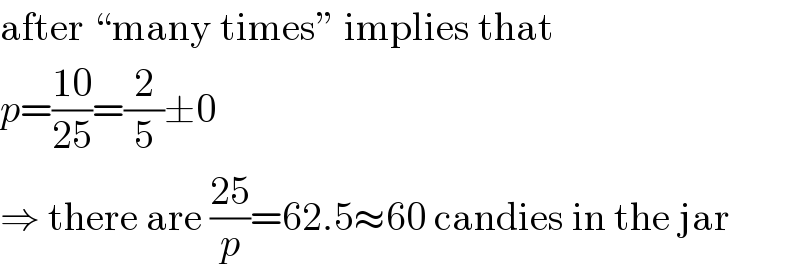
Question and Answers Forum
Question Number 101062 by bemath last updated on 30/Jun/20

Answered by MJS last updated on 30/Jun/20

Commented by bemath last updated on 30/Jun/20

Commented by bemath last updated on 30/Jun/20

Commented by bemath last updated on 30/Jun/20

Commented by MJS last updated on 30/Jun/20
![if we do not know the probability and we make one test as described here, we get a normally distributed p. we then have to define a confidence interval. usually you want to be at least 95% sure that the probability lies within [p−ε; p+ε] you′ll have to study this. but after “many tests” means we are 100% sure the probability is (2/5). then it′s easy: we marked 25 if we take out 25 we get 10 marked we must take out 2.5×25 to get 2.5×10 marked 2.5×25=62.5](Q101071.png)
Commented by bemath last updated on 30/Jun/20

